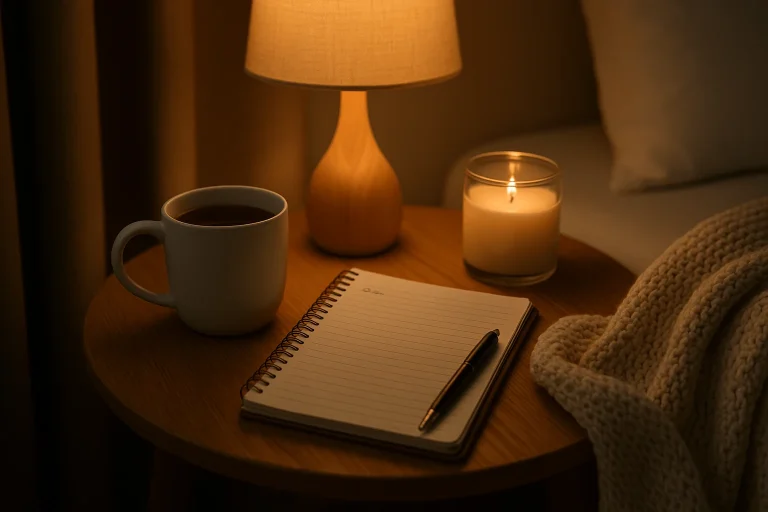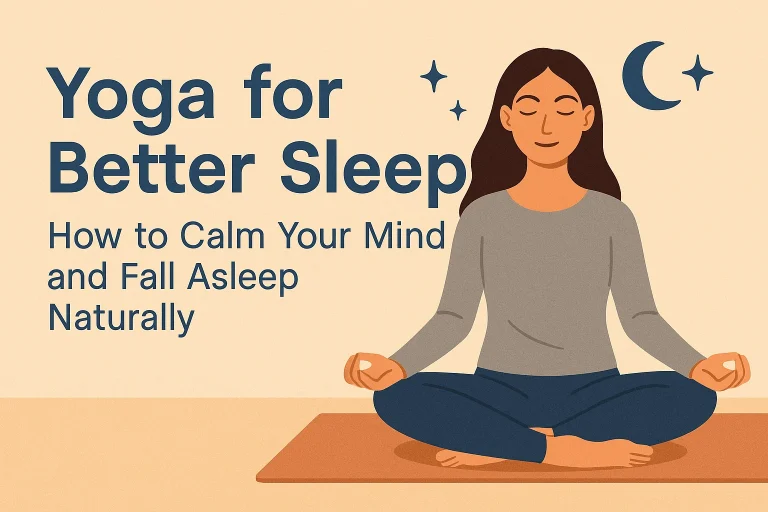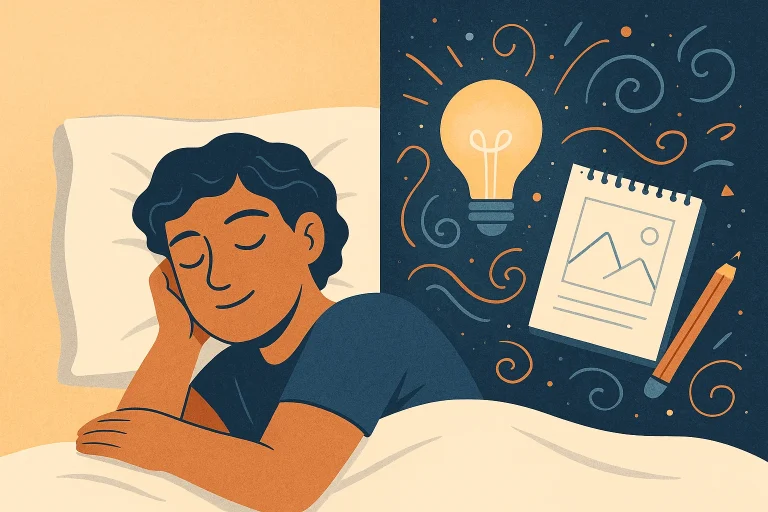5 Proven Mental Exercises for Sleep That Actually Work
Have you ever crawled into bed exhausted, only to find your mind buzzing with thoughts the moment your head hits the pillow? You replay conversations, worry about tomorrow’s to-do list, or find yourself caught in a loop of “what ifs.” It’s frustrating, isn’t it? You’re tired, but your brain won’t switch off.
That’s where mental exercises for sleep come in. Instead of trying to force yourself to drift off—which usually makes things worse—you can use simple, calming techniques to quiet your thoughts and signal to your body that it’s safe to rest.
In this guide, you’ll discover five proven strategies—backed by research and recommended by sleep experts—that you can try tonight. Whether you struggle with anxiety at bedtime, insomnia, or just the occasional restless night, these mental exercises can help you fall asleep faster and wake up feeling more refreshed.
1. 4-7-8 Breathing Method for Sleep
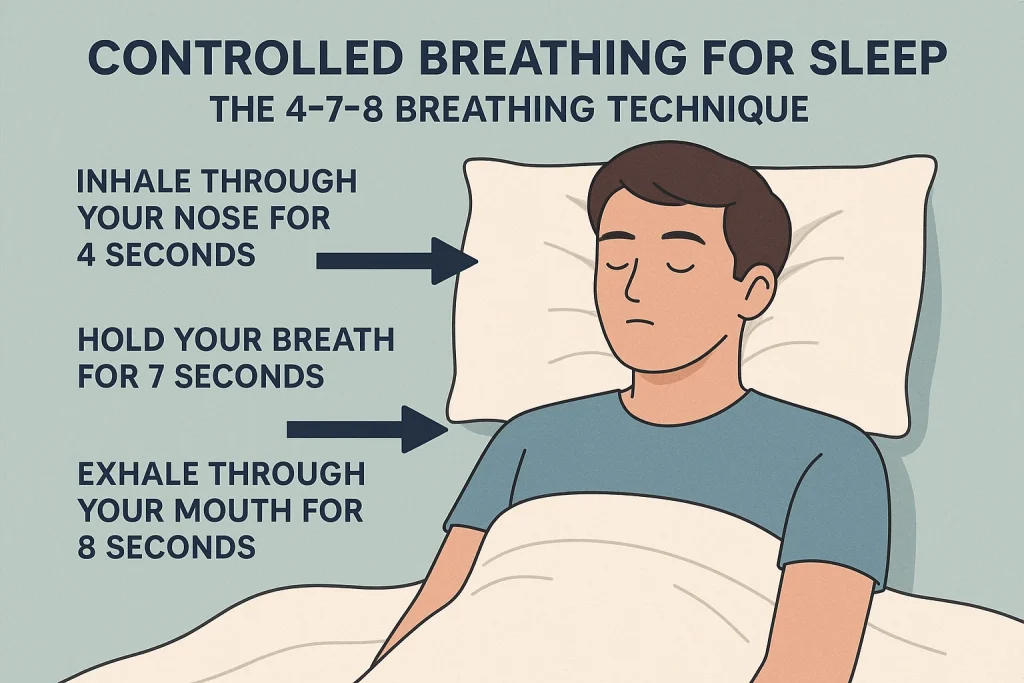
The 4-7-8 breathing method for sleep is one of the simplest and most effective ways to calm your nervous system at night. It’s sometimes called a “natural tranquilizer for the body” because it slows your heart rate, relaxes your muscles, and helps quiet racing thoughts.
Here’s how to do it step by step:
- Inhale slowly through your nose for a count of 4.
- Hold your breath for a count of 7.
- Exhale through your mouth for a count of 8, making it as slow and steady as possible.
- Repeat the cycle at least 4 times.
At first, it might feel strange to hold your breath that long, but with practice, it becomes easier—and you’ll notice your body slipping into a calmer rhythm. Many people say it helps them drift off in just a few minutes.
The 4-7-8 pattern activates your body’s relaxation response, lowering stress hormones and shifting your focus away from anxious thoughts. By giving your mind a simple rhythm to follow, you naturally break the cycle of mental overthinking.
Related: 7 Powerful Breathing Techniques to Help You Fall Asleep Fast
2. Visualization for Sleep: Quiet Your Racing Mind
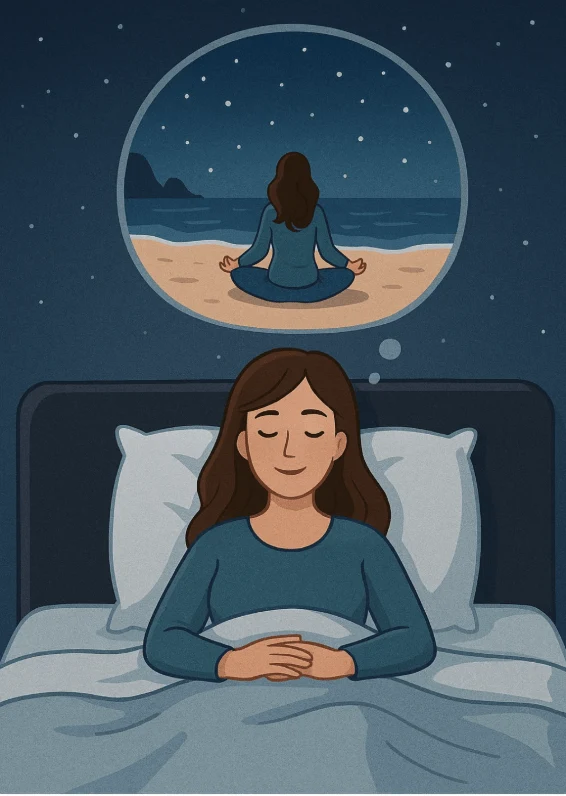
Visualization techniques for sleep work by giving your mind something peaceful to focus on instead of your worries. When you imagine a calming scene with all your senses engaged, your brain responds as if you’re really there—helping you relax and ease into rest.
Here’s a simple way to try it tonight:
- Picture yourself on a quiet beach at sunset.
- Hear the sound of waves rolling in.
- Feel the sand beneath your feet.
- Notice the colors in the sky shifting from gold to soft purple.
- Breathe slowly as you let the scene play out in your imagination.
You can also choose a place that feels personal and safe—a forest path, a cozy cabin, or even a memory from your childhood that brings comfort. The more detail you add, the more your mind will settle into the imagery.
Your brain struggles to hold onto stressful thoughts while deeply imagining a calming scene. Visualization activates the same areas of the brain that respond to real experiences, which helps distract you from anxiety and nudges your body toward sleep.
3. Progressive Muscle Relaxation for Sleep
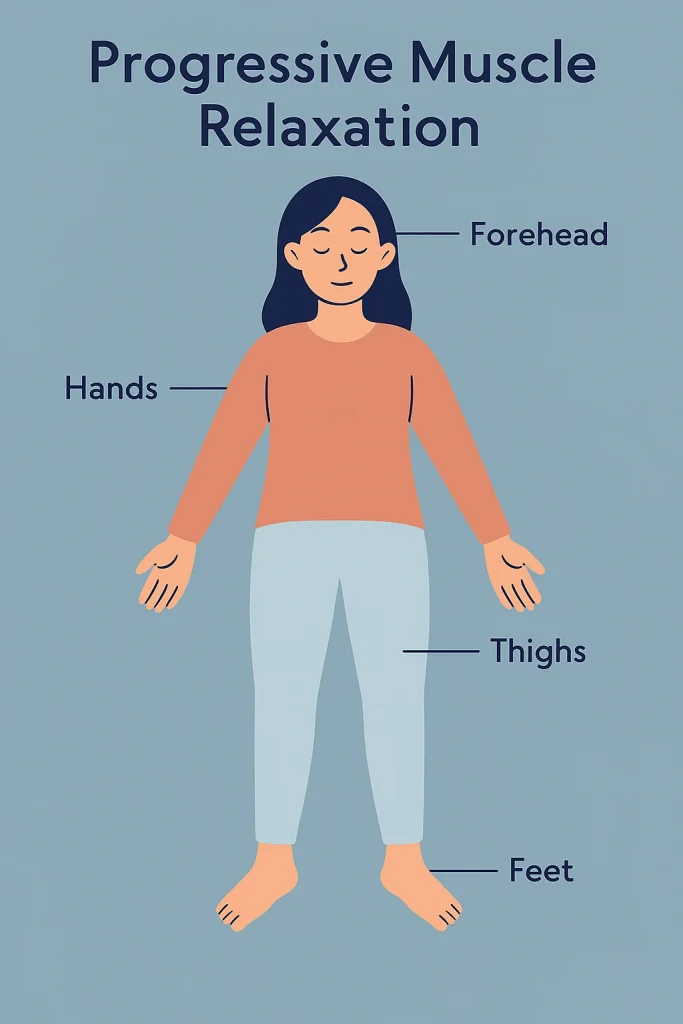
Progressive muscle relaxation for sleep is a simple but powerful technique that helps release tension you may not even realize you’re holding. When your body relaxes, your mind usually follows—making it easier to drift off.
Here’s how to practice it step by step:
- Start with your toes. Curl them tightly for 5 seconds, then let go.
- Move up to your calves. Squeeze the muscles, hold, then release.
- Continue with your thighs, hips, and stomach.
- Work your way up through your arms, shoulders, neck, and finally your face.
As you go, pay attention to the difference between tension and relaxation. That awareness alone can be calming. With practice, you’ll notice your body softening more quickly, which sets the stage for deeper sleep.
Tightening and releasing muscle groups signals to your nervous system that it’s safe to relax. It also helps you tune into your body instead of your thoughts, making it easier to let go of stress and prepare for rest.
4. Mindfulness Meditation for Sleep
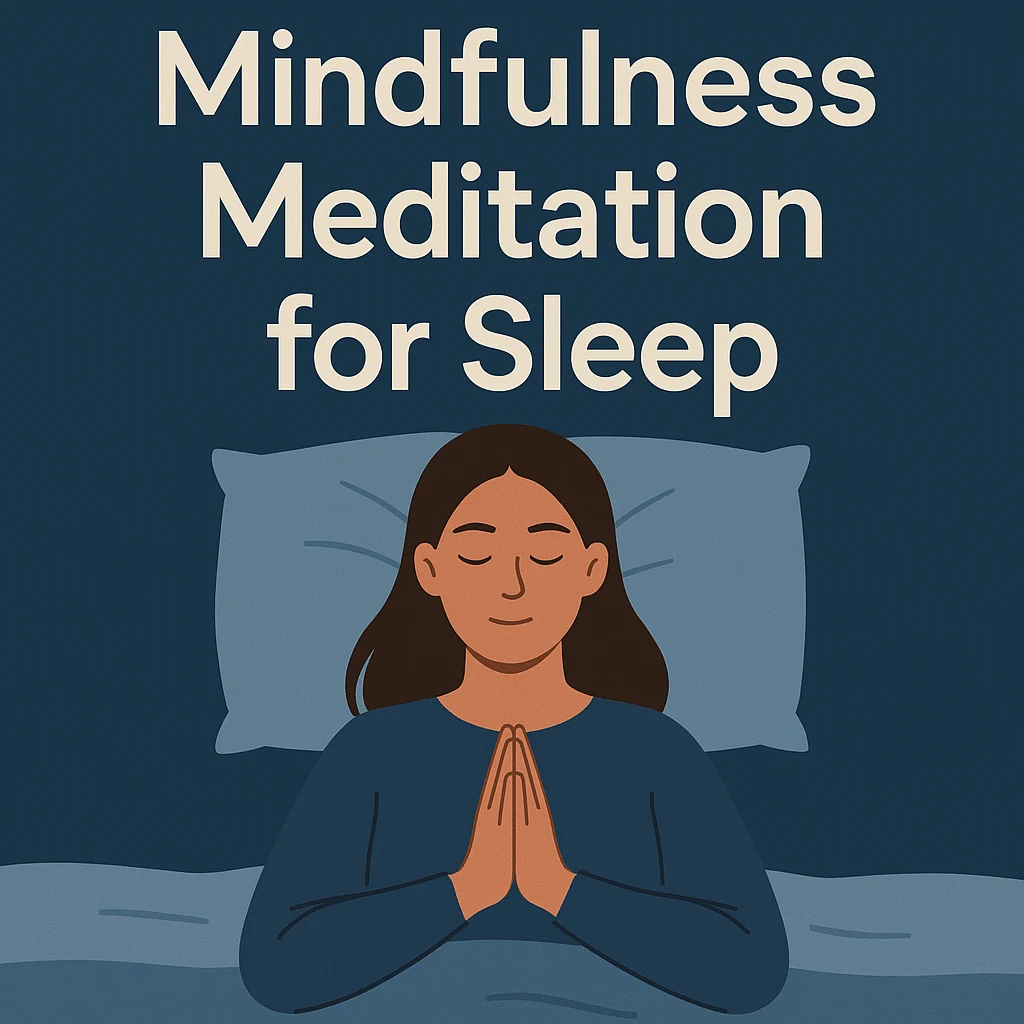
Mindfulness Meditation for sleep is all about teaching your brain to stay present instead of running ahead with worries or replaying the day’s events. When you practice mindfulness at bedtime, you give your mind permission to slow down and rest.
Easy 5-Minute Mindfulness Meditation Guide for Sleep
- Step 1: Get comfortable: Sit or lie down in a relaxed position—there’s no “right” posture, just whatever feels cozy and natural for you.
- Step 2: Focus gently on your breath: Feel your chest rising and falling. Notice each inhale and exhale without changing your breathing.
- Step 3: Let thoughts pass by: Your mind will wander—that’s totally normal. Instead of fighting thoughts, just acknowledge them gently and let them drift away, returning your attention to breathing.
- Step 4: Keep it short and sweet: Start small—5 to 10 minutes is perfect. Over time, you’ll find it easier and more effective.
At first, your thoughts might feel loud and constant. That’s normal. The point isn’t to erase them but to change how you relate to them. Over time, mindfulness makes those thoughts feel less urgent, which makes drifting off much easier.
Research shows that mindfulness meditation reduces anxiety, lowers stress hormones, and improves sleep quality. By observing thoughts instead of wrestling with them, you stop fueling the cycle that keeps you awake..
5. Cognitive Shuffle Sleep Method
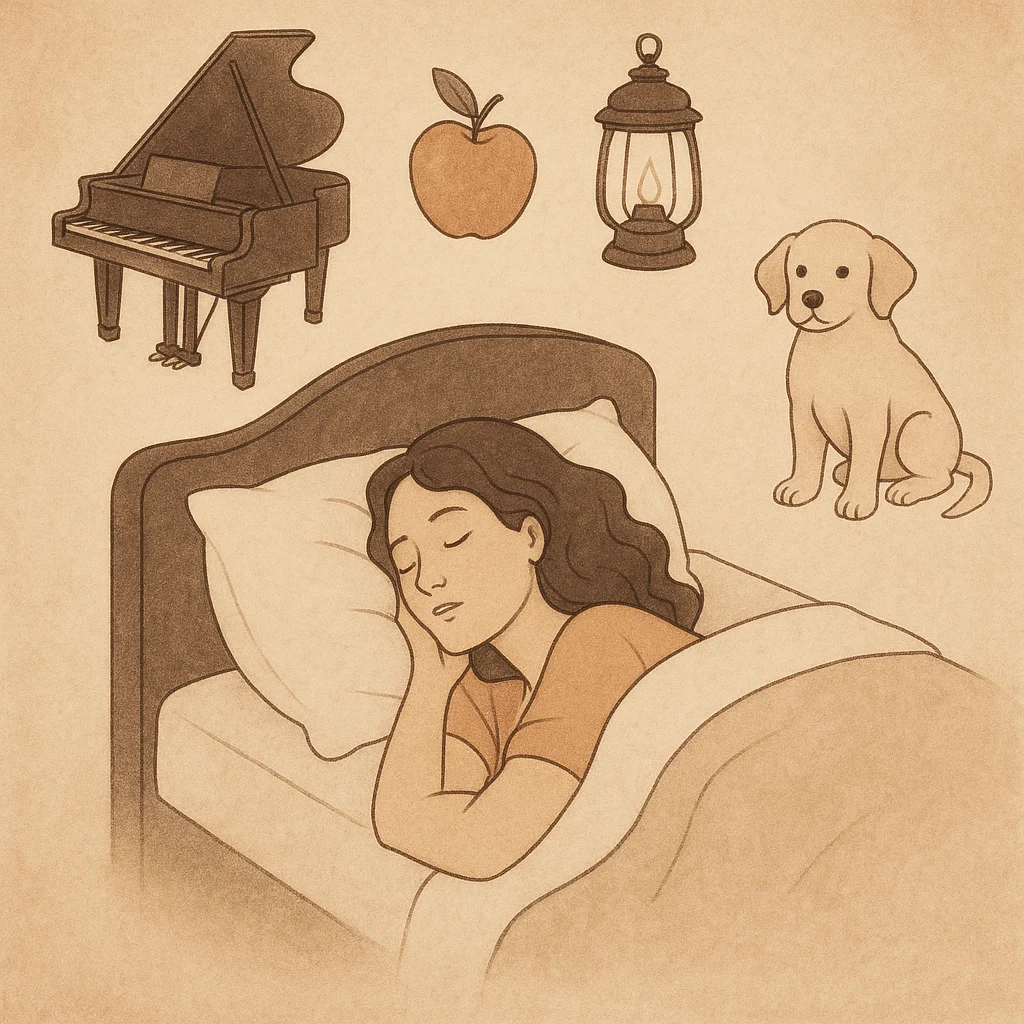
The cognitive shuffle sleep method is like a modern upgrade to counting sheep. Instead of focusing on numbers, you run through random words and images in your mind. This simple mental activity keeps your brain busy enough to block out worries, but not so stimulating that it prevents sleep.
Here’s how to try it:
- Pick a simple, neutral word—something like apple.
- Take the first letter (A) and think of as many unrelated objects as you can: airplane, anchor, apricot.
- Move on to the next letter (P): piano, pumpkin, pillow.
- Continue through the rest of the word, letting your imagination wander.
Most people don’t even finish the word before they start to drift off.
Random word associations mimic the natural, dreamlike state your brain enters as you fall asleep. By filling your mind with harmless, scattered images, you interrupt racing thoughts and ease yourself into sleep more smoothly.
Mental Exercises for Sleep: Mistakes to Avoid and Tips for Success
Even though these mental exercises for sleep are simple, it’s easy to trip up if you approach them the wrong way. Here are a few things to watch for—and what to do instead.
Mistakes to Avoid
- Trying too hard: If you’re stressing about whether the exercise is “working,” you’re keeping your mind active instead of calming it.
- Being inconsistent: Using these techniques only on restless nights makes them less effective.
- Choosing the wrong imagery: Visualizing work, stressful memories, or anything stimulating can backfire.
- Skipping a wind-down: Jumping straight from phone scrolling to meditation makes it harder for your brain to switch gears.
Tips for Making Them a Habit
- Start small: Pick one exercise and practice it regularly. Even a few minutes a night helps.
- Pair with bedtime cues: Try your chosen method right after brushing your teeth or dimming the lights.
- Stay flexible: Some nights mindfulness might work better, other nights breathing or visualization will—switch as needed.
- Track how you feel: Notice your mornings. A calmer start to the day is often the first sign these practices are working.
Making Mental Exercises for Sleep Part of Your Night
Falling asleep doesn’t have to feel like a nightly struggle. Instead of lying awake with a racing mind, you can lean on mental exercises for sleep to calm your thoughts and ease into rest.
The key is consistency. The more often you practice, the more your brain begins to recognize these techniques as signals that it’s time to wind down. You don’t need to master everything at once—just pick one tonight and give it a try.
So, what’s your next step? Choose a method that feels doable, commit to it for a few nights, and see how your body responds. Over time, these small practices can transform bedtime from something stressful into something you actually look forward to.
Frequently Asked Questions
What is the 5 4 3 2 1 sleep method?
It’s a grounding technique that uses your senses. You name five things you see, four you touch, three you hear, two you smell, and one you taste to calm racing thoughts before sleep.
What is the shuffle sleep method?
Also called the cognitive shuffle, it has you think of random, unrelated words or objects. This playful mental trick distracts you from stress and helps your brain drift into sleep.
Does mindfulness meditation help with sleep problems?
Yes. Mindfulness meditation for sleep reduces stress and anxiety by helping you notice thoughts without reacting. This calm awareness makes it easier to relax and fall asleep.
How do you practice progressive muscle relaxation for sleep?
Tense and release one muscle group at a time—starting with your toes and moving up through your body. This lowers tension and signals your body it’s safe to sleep.
What is the 4-7-8 breathing method and does it really work?
It’s a breathing technique: inhale for 4 counts, hold for 7, exhale for 8. It slows breathing, calms the nervous system, and many people find it helps them fall asleep faster.
{ “@context”: “https://schema.org”, “@type”: “FAQPage”, “mainEntity”: [ { “@type”: “Question”, “name”: “What is the 5 4 3 2 1 sleep method?”, “acceptedAnswer”: { “@type”: “Answer”, “text”: “It’s a grounding technique that uses your senses. You name five things you see, four you touch, three you hear, two you smell, and one you taste to calm racing thoughts before sleep.” } }, { “@type”: “Question”, “name”: “What is the shuffle sleep method?”, “acceptedAnswer”: { “@type”: “Answer”, “text”: “Also called the cognitive shuffle, it has you think of random, unrelated words or objects. This playful mental trick distracts you from stress and helps your brain drift into sleep.” } }, { “@type”: “Question”, “name”: “Does mindfulness meditation help with sleep problems?”, “acceptedAnswer”: { “@type”: “Answer”, “text”: “Yes. Mindfulness meditation for sleep reduces stress and anxiety by helping you notice thoughts without reacting. This calm awareness makes it easier to relax and fall asleep.” } }, { “@type”: “Question”, “name”: “How do you practice progressive muscle relaxation for sleep?”, “acceptedAnswer”: { “@type”: “Answer”, “text”: “Tense and release one muscle group at a time—starting with your toes and moving up through your body. This lowers tension and signals your body it’s safe to sleep.” } }, { “@type”: “Question”, “name”: “What is the 4-7-8 breathing method and does it really work?”, “acceptedAnswer”: { “@type”: “Answer”, “text”: “It’s a breathing technique: inhale for 4 counts, hold for 7, exhale for 8. It slows breathing, calms the nervous system, and many people find it helps them fall asleep faster.” } } ] }

